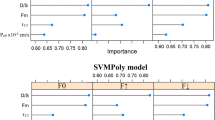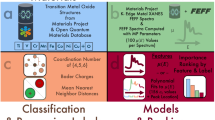Abstract
In the pharmaceutical industry, dissolution testing is part of the target product quality that is essential in the approval of new products. The prediction of the dissolution profile based on spectroscopic data is an alternative to the current destructive and time-consuming method. Raman and near-infrared (NIR) spectroscopies are two complementary methods, that provide information on the physical and chemical properties of the tablets and can help in predicting their dissolution profiles. This work aims to use the information collected by these methods by creating partial least squares models to predict the content of the pills. The predicted values are then used along with the measured compression force as input data to Random Decision Forests in order to predict the dissolution profiles of the scanned tablets. It was found that Random Decision Forests models were able to predict the dissolution profile within the acceptance limit of the f2 factor.
Access this chapter
Tax calculation will be finalised at checkout
Purchases are for personal use only
Similar content being viewed by others
References
Lawrence, X.Y.: Pharmaceutical quality by design: product and process development, understanding, and control. Pharm. Res. 25(4), 781–791 (2008)
Susto, G.A., McLoone, S.: Slow release drug dissolution profile prediction in pharmaceutical manufacturing: a multivariate and machine learning approach. In: 2015 IEEE International Conference on Automation Science and Engineering (CASE), pp. 1218–1223. IEEE (2015)
Patadia, R., Vora, C., Mittal, K., Mashru, R.: Dissolution criticality in developing solid oral formulations: from inception to perception. Crit. Rev. Therap. Drug Carrier Syst. 30(6) (2013)
Hédoux, A.: Recent developments in the Raman and infrared investigations of amorphous pharmaceuticals and protein formulations: a review. Adv. Drug Deliv. Rev. 100, 133–146 (2016)
Porep, J.U., Kammerer, D.R., Carle, R.: On-line application of near infrared (NIR) spectroscopy in food production. Trends Food Sci. Technol. 46(2), 211–230 (2015)
Zannikos, P.N., Li, W.-I., Drennen, J.K., Lodder, R.A.: Spectrophotometric prediction of the dissolution rate of carbamazepine tablets. Pharm. Res. 8(8), 974–978 (1991)
Donoso, M., Ghaly, E.S.: Prediction of drug dissolution from tablets using near-infrared diffuse reflectance spectroscopy as a nondestructive method. Pharm. Dev. Technol. 9(3), 247–263 (2005)
Freitas, M.P., et al.: Prediction of drug dissolution profiles from tablets using NIR diffuse reflectance spectroscopy: a rapid and nondestructive method. J. Pharmac. Biomed. Anal. 39(1–2), 17–21 (2005)
Hernandez, E., et al.: Prediction of dissolution profiles by non-destructive near infrared spectroscopy in tablets subjected to different levels of strain. J. Pharm. Biomed. Anal. 117, 568–576 (2016)
Galata, D.L., et al.: Fast, spectroscopy-based prediction of in vitro dissolution profile of extended release tablets using artificial neural networks. Pharmaceutics 11(8), 400 (2019)
Mrad, M.A., Csorba, K., Galata, D.L., Nagy, Z.K., Nagy, B.: Spectroscopy-based prediction of in vitro dissolution profile using artificial neural networks. In: Rutkowski, L., Scherer, R., Korytkowski, M., Pedrycz, W., Tadeusiewicz, R., Zurada, J.M. (eds.) ICAISC 2021. LNCS (LNAI), vol. 12854, pp. 145–155. Springer, Cham (2021). https://doi.org/10.1007/978-3-030-87986-0_13
Lind, A.P., Anderson, P.C.: Predicting drug activity against cancer cells by random forest models based on minimal genomic information and chemical properties. PLoS One 14(7), e0219774 (2019)
Hu, W., et al.: Identifying predictive markers of chemosensitivity of breast cancer with random forests. J. Biomed. Sci. Eng. 3(01), 59 (2010)
Meyer, J.G., Liu, S., Miller, I.J., Coon, J.J., Gitter, A.: Learning drug functions from chemical structures with convolutional neural networks and random forests. J. Chem. Inf. Model. 59(10), 4438–4449 (2019)
Mistry, P., Neagu, D., Trundle, P.R., Vessey, J.D.: Using random forest and decision tree models for a new vehicle prediction approach in computational toxicology. Soft. Comput. 20(8), 2967–2979 (2016)
Moore, J., Flanner, H.: Mathematical comparison of dissolution profiles. Pharm. Technol. 20(6), 64–74 (1996)
Acknowledgments
Project no. FIEK_16-1-2016-0007 has been implemented with the support provided from the National Research, Development and Innovation Fund of Hungary, financed under the Centre for Higher Education and Industrial Cooperation Research infrastructure development (FIEK_16) funding scheme.
Author information
Authors and Affiliations
Corresponding author
Editor information
Editors and Affiliations
Rights and permissions
Copyright information
© 2023 The Author(s), under exclusive license to Springer Nature Switzerland AG
About this paper
Cite this paper
Mrad, M.A., Csorba, K., Galata, D.L., Nagy, Z.K., Nagy, B. (2023). Spectroscopy-Based Prediction of In Vitro Dissolution Profile Using Random Decision Forests. In: Rutkowski, L., Scherer, R., Korytkowski, M., Pedrycz, W., Tadeusiewicz, R., Zurada, J.M. (eds) Artificial Intelligence and Soft Computing. ICAISC 2022. Lecture Notes in Computer Science(), vol 13588. Springer, Cham. https://doi.org/10.1007/978-3-031-23492-7_35
Download citation
DOI: https://doi.org/10.1007/978-3-031-23492-7_35
Published:
Publisher Name: Springer, Cham
Print ISBN: 978-3-031-23491-0
Online ISBN: 978-3-031-23492-7
eBook Packages: Computer ScienceComputer Science (R0)




